The Ultimate Guide to AI-Generated Email Templates: Ignite Conversions
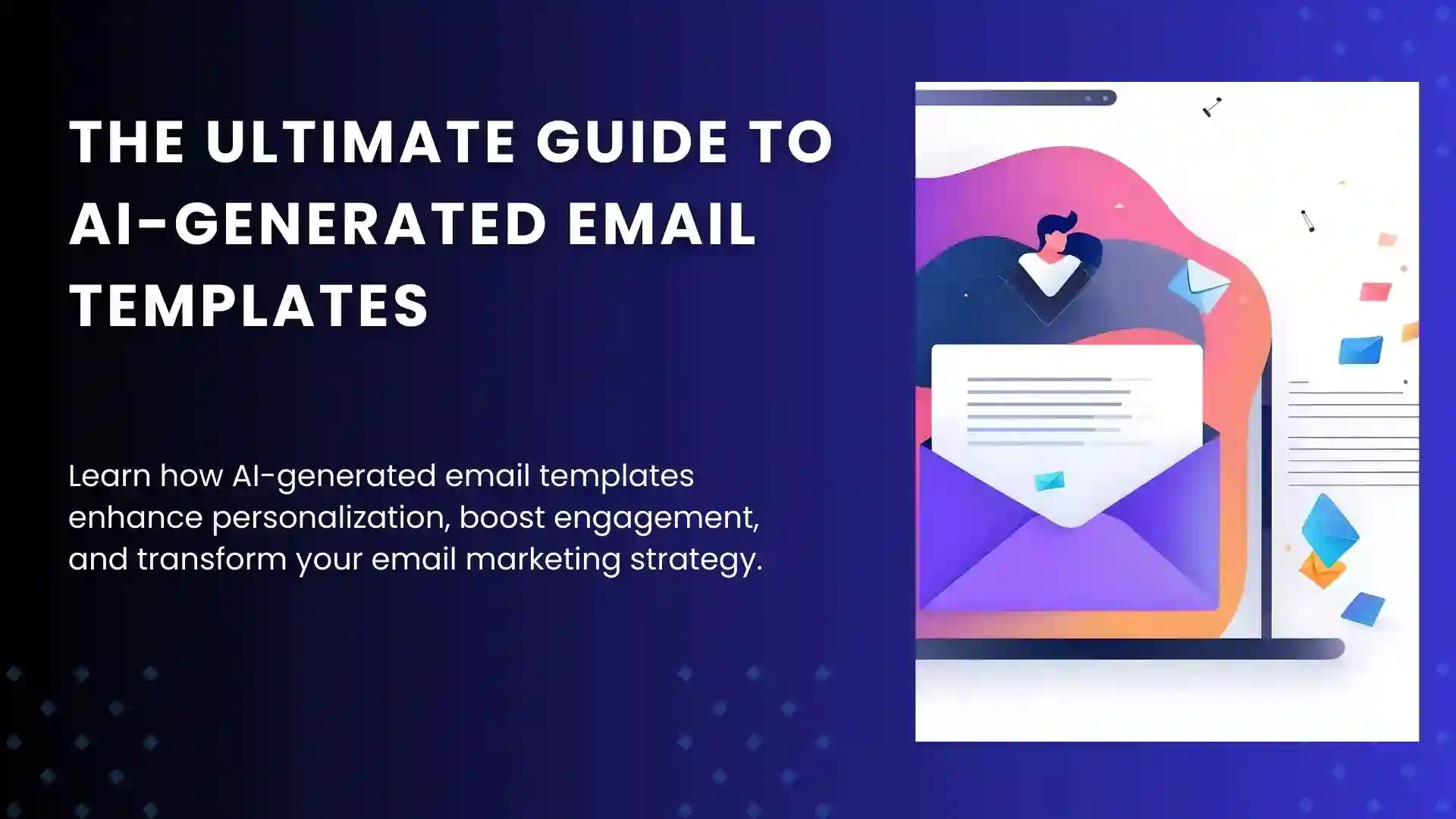
Ever felt like your emails are just disappearing into the internet void, with nobody really paying attention?
Well, you’re not alone.
Writing emails that people read and act on can be a real challenge.
What if an AI assistant could craft personalized emails with one click – all written to boost engagement and conversions?
That is where ai-generated email templates come in.
Yes, AI can now write your emails, and not just any emails, but laser-targeted messages that speak directly to your customers’ hearts.
In this guide, I’ll break down the mystery behind these AI-powered email templates, show you their capability of adding a personal touch to your emails, and how to use them to boost your chances of people responding.
Key Takeaways
- AI-powered templates act like a digital writing assistant, studying millions of emails to suggest relevant content tailored to each specific reader.
- AI templates offer massive time savings, improved open rates, increased click-through rates, and enhanced conversions by personalizing content and targeting audience needs.
- AI analyzes user behavior, delivers personalized recommendations, tailors content for individual recipients, and optimizes brand voice for a cohesive and authentic experience.
- Platforms like Mailchimp, Klaviyo, and Jasper offer various AI features catering to different needs, from basic email marketing to standalone AI-powered writing tools.
- Use AI to personalize subject lines for high open rates, segment audiences for targeted messaging, incorporate persuasive copywriting techniques, and add a human touch to avoid sounding robotic.
What Are AI-Generated Email Templates?
Have you ever had a friend help you write an important email to get the tone and words just right? Now picture that same thoughtful guidance and personalization, but fully automated with artificial intelligence.
AI-powered email templates are like having a digital writing assistant. These tools study millions of emails to understand what effective messages look like.
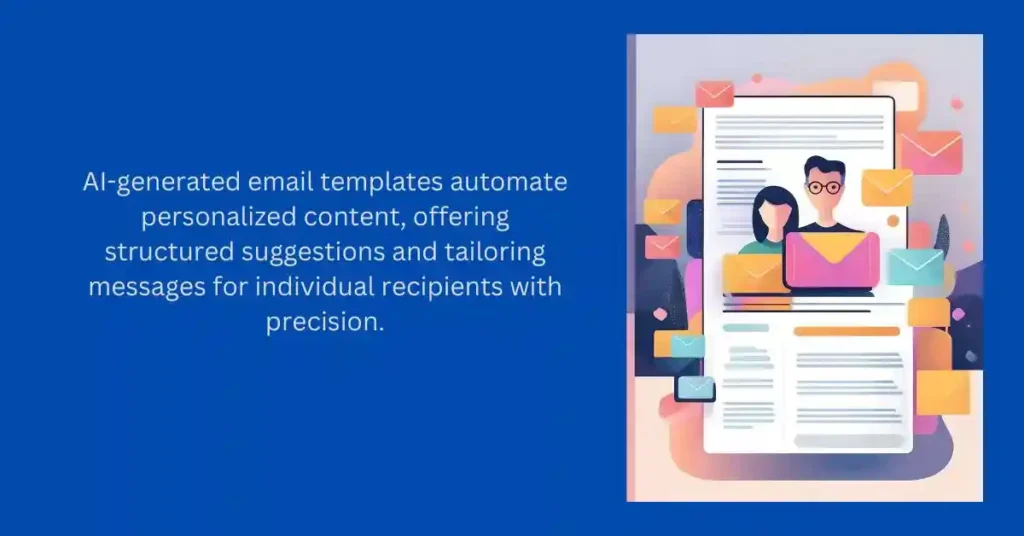
Then when you go to create a new email, the AI taps into its learnings to suggest relevant content that resonates with each specific reader.
So the templates give some structure upfront. Then AI uses customer information to fill in the blanks, customizing the words for every person.
It’s like having your own virtual writer, but instead of one message, they automatically make unique emails for all your contacts.
Key Advantages of AI Email Templates
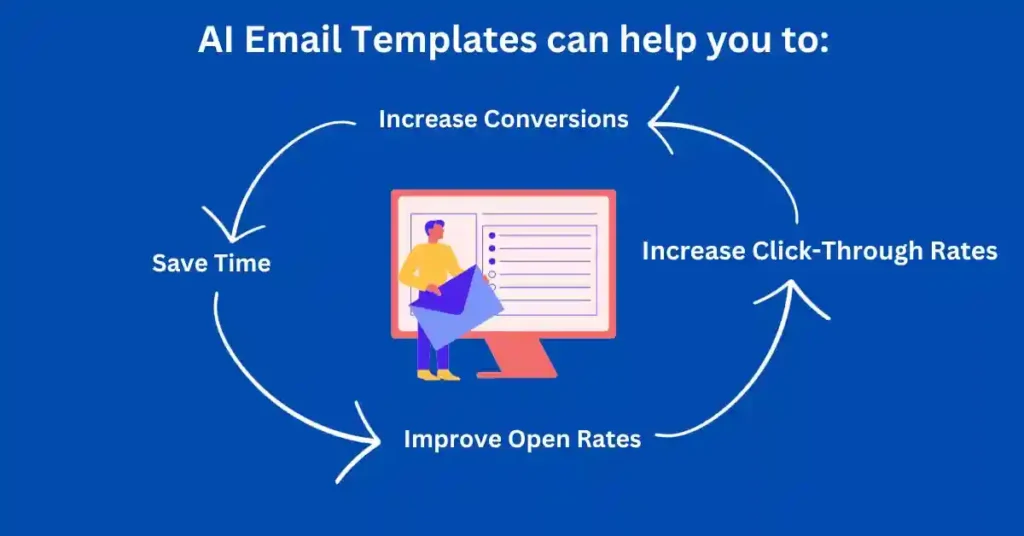
- Improved Open Rates: AI studies what words hook people to preview emails. It uses that info to help you craft attention-getting headlines so more folks click to read.
- Increased Click-Through Rates: AI customizes content by showing subscribers more offers and topics they positively engaged with before based on past preferences. This makes it more likely they click CTAs to learn more or buy.
- Increased Conversions: With both more opens and clicks due to compelling email copies and persuasive language, you’ll convert more readers into customers over time.
- Massive Time Savings: Crafting effective emails at scale is hugely time-consuming. AI assistants automate the writing process to help you create 100s of personalized emails with one-click. This frees up time for other priorities.
Examples of Successful AI-generated email campaigns
Many companies and marketers have harnessed the magic of AI-generated emails to skyrocket their engagement and conversions.
For example, Amazon utilizes AI to provide personalized product recommendations to customers based on their previous purchases and browsing history.
Booking.com improves its booking success by suggesting personalized options and building trust through user-specific recommendations and strategies that enhance confidence in the booking process.
Around 38% of marketers use AI specifically for email writing.
Among these marketers, 95% consider AI-driven email creation “effective,” with 54% expressing that it is “very effective.”
Common concerns and misconceptions about AI-written emails
You might be thinking, “Won’t my emails sound generic and robotic?” Not anymore! These AI elves have been improving their skills and can capture your brand voice and inject humor when appropriate.
“But won’t they lack personalization?” Absolutely not! These templates are designed to be customized with individual details, making each email feel unique and relevant.
The AI studies how real people write and then suggests relevant content in natural language.
So rather than getting a generic “dear friend” message that could be blasted to just anyone, James receives a tailored offer referencing past purchases he loved.
Lisa gets a personalized trip recommendation based on previous dream vacations she pinned.
And Mohammed sees a discounted ticket to an upcoming film festival starring his favorite indie director.
How AI personalizes and targets email content for better engagement
Understanding User Behavior
AI analyzes how users interact with your emails, understands their preferences, the types of content they click on, and what makes them tick.
By decoding these digital clues, it tailors future emails to align with individual interests, creating a seamless and engaging experience.
Personalized Recommendations
Ever had an online shopping platform suggest precisely what you were looking for, almost like it read your mind?
That’s the power of personalized recommendations.
In the email realm, AI suggests content based on past behavior, ensuring your audience receives recommendations that align with their tastes and preferences.
Dynamic Content Tailoring
One size fits none in the world of emails. AI understands this perfectly.
Instead of sending generic messages, it tailors content, ensuring each recipient gets a message crafted just for them to suit specific needs and interests.
Optimized Brand Voice
Your brand has a personality – a unique voice that resonates with your audience.
AI doesn’t just personalize content; it optimizes your brand voice.
Whether your tone is playful, professional, or a mix of both, these tools ensure consistency across all communications.
This optimization enhances brand recognition and builds trust, creating a cohesive and authentic brand experience for your audience.
Finding the Perfect AI Partner
With AI making emails better, let’s check out the best platforms and how to choose the perfect one.
Top AI Email Template Platforms
| Category | Platform | Key Features | Price (Monthly) | Best for |
| AI-powered Email Marketing Platforms | Mailchimp | Basic AI features like subject line optimization, send time automation, personalization tokens. | Free (limited features), $6.5 – $175 | Budget-conscious businesses, beginner email marketers. |
| Klaviyo | AI-powered segmentation and product recommendations in email templates, focused on e-commerce. | Free (limited features), $45 – $60 | E-commerce businesses, personalized product recommendations. | |
| Zeta Global | Powerful AI that personalizes emails based on individual purchase history and preferences, advanced analytics. | Custom quote | Large businesses with complex customer data, highly personalized campaigns. | |
| Brevo (formerly Sendinblue) | AI-powered automation for follow-up sequences, A/B testing, landing page creation. | Free (limited features), $25 – $65 It also has a Custom price package. | Businesses seeking automation and multi-channel marketing. | |
| Stand-alone AI-powered Email Writing Tool | Jasper | Customizable email templates, advanced features like multilingual support, long-form email generation. | Has a 7-day free trial. $39-$59, plus a custom quote. | High-volume email writing, creative campaigns, diverse languages. |
| Copy AI | Chatbot-like interface for generating drafts based on tone and purpose, quick email generation. | Free (limited features) $49 (Pro plan) $249 (Teams plan) | This AI writing tool is easy-to-use, and ideal for short, targeted emails. | |
| Rytr | User-friendly interface, 20+ pre-built writing tones, built-in plagiarism checker, affordable. | Free (limited features) $9 – $29 | Cost-conscious users, variety of writing styles. | |
| Flowrite | Large template gallery categorized by situation and role, easy to find relevant drafts, integrates with Gmail and LinkedIn. | Free (limited features), $4 – $24, plus a custom quote. | Efficient email writing, professionals across various roles. | |
| LongShot AI | Integrates with SemRush for SEO analysis, advanced features like email sequence generation, subject line optimization. | $19 – $49, plus a custom quote. | SEO-focused campaigns, complex email sequences, technical users. |
Selecting the Right AI Email Template Tool
Choosing an AI email assistant takes some thoughtful research. Here’s a guide to picking the right tool for your needs:
Identify Your Goals
Before diving into the sea of options, define your email marketing goals.
What do you aim to achieve?
Whether it is boosting open rates, increasing conversions, or enhancing customer engagement, clearly understanding your objectives will guide your tool selection.
Consider User-Friendliness
The last thing you want is a tool that complicates your email creation process.
A tool that simplifies rather than complicates ensures a seamless integration into your daily operations.
Personalization Capabilities
The heart of effective AI-generated emails lies in personalization.
Scrutinize the tool’s personalization features.
Can it adapt to your brand voice?
Does it offer dynamic content capabilities for tailored messaging?
Ensure the tool can create a personalized experience that resonates with your audience.
Compatibility and Integrations
Efficiency is key.
Ensure the tool integrates seamlessly with your existing tech stack.
This includes compatibility with your email service provider (ESP), CRM, or other marketing tools.
A cohesive integration minimizes disruptions and optimizes your workflow.
Automation and Scalability
Look for a tool that offers automation features to streamline your email campaigns.
Additionally, assess its scalability – can it grow with your business as your email marketing needs evolve?
Trial Period or Demo
Never commit blindly. Look for tools that offer a trial period or demo.
This hands-on experience allows you to explore functionalities firsthand, ensuring the tool aligns with your expectations and seamlessly integrates into your operations.
Pricing Structure
Consider pricing structures that align with your email marketing frequency and volume.
Some tools offer tiered pricing, while others may charge based on the number of users or features used.
User Reviews and Testimonials
Peer insights matter. Research user reviews and testimonials to gauge user satisfaction.
Pay attention to feedback regarding customer support, ease of use, and whether the tool delivered on its promises.
Crafting Compelling AI-Powered Emails
While AI can automatically generate email copy, you still need to set it up for success.
Here are pro tips and best practices for creating killer AI email campaigns:
Personalizing Email Subject Lines for High Open Rates
We all know the subject line makes or breaks whether your email gets opened.
Leverage AI’s ability to analyze user behavior and tailor subject lines based on individual preferences.
Incorporate the recipient’s name or reference their past interactions to grab attention.
Segmenting Audiences for Targeted Messaging
Not all subscribers are created equal.
Use AI to segment your audience based on behavior, preferences, and demographics.
Tailor your message to each segment’s unique characteristics.
A targeted approach ensures your content resonates, leading to higher engagement and conversion rates.
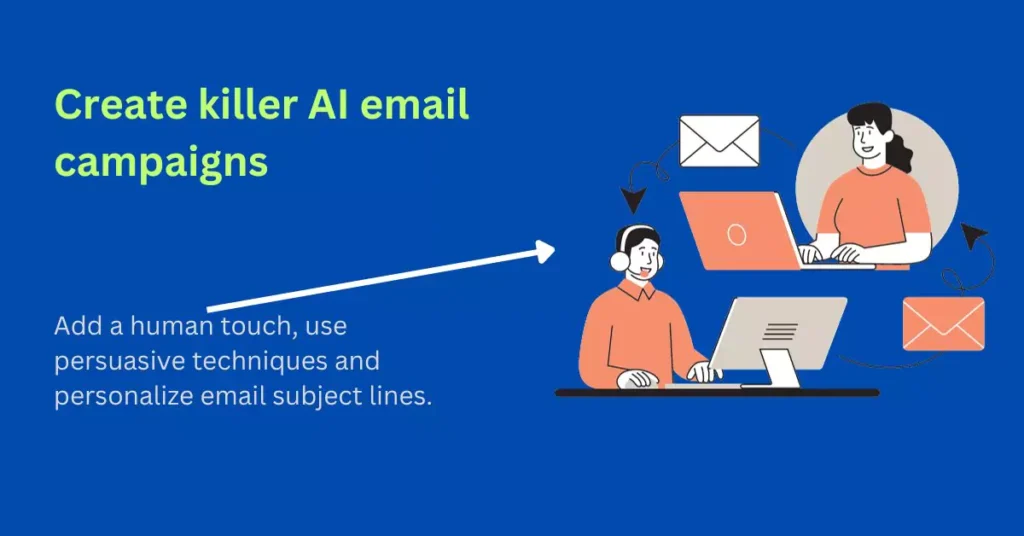
Incorporating Persuasive Copywriting Techniques
Words matter. AI can enhance your copywriting game by suggesting language that resonates with your audience.
Use persuasive techniques like storytelling, urgency, and exclusivity.
Craft compelling narratives that address your audience’s pain points and offer solutions.
AI-generated copy can be a powerful ally in creating messages that captivate and convince.
Adding a Human Touch
Even with personalization, some AI emails can still sound robotic.
Nobody likes receiving emails that sound like a machine wrote them.
AI, when used thoughtfully, can infuse a human touch into your messages. Use AI to analyze your brand’s voice and replicate it in your emails.
Consider adding personal anecdotes, casual language, and genuine expressions to make your audience feel engaged with a human, not a bot.
Best practices for different email types
Crafting the perfect email depends on what you want readers to do. Here are tips to make popular messages shine:
Welcome Emails
Use AI to personalize welcome emails with the recipient’s name and a warm greeting.
Build excitement by highlighting promos, setting expectations on what’s coming, and making new subscribers feel special right off the bat.
Promotional Emails
You should spotlight deals through urgency and social proof, focus on product benefits readers care about, and use dynamic content to showcase exactly what someone wants to buy.
Cart Abandonment Emails
It is important to trigger urgency by reminding them that deals won’t last.
Another practice is to offer exclusive discounts or bundle pricing.
Newsletters
Grab readers’ attention by sharing exclusive company updates, personalized recommendations, and adding eye-catching visuals and multimedia.
Cold Emails
Doing research is key so your message fits the readers.
It is important to figure out what they care about or the problems they face.
Then, you should explain exactly how your business can help them specifically.
Measuring Success and Optimizing Performance
Congratulations, you’ve sent out your AI-powered emails!
Now, let’s measure success and optimise performance to ensure your efforts translate into tangible results.
Here’s your roadmap:
1. Importance of Tracking Email Campaign Metrics:
Why should you track metrics?
It is because data is your compass in the vast sea of email marketing.
Metrics provide invaluable insights into the effectiveness of your campaigns, helping you understand what works and what needs improvement.
By tracking metrics, you better understand your audience’s behavior, allowing you to refine your strategies for maximum impact.
2. Key Metrics to Analyze
- Open Rates: The first interaction – how many recipients opened your email? High open rates indicate compelling subject lines and engaging content.
- Click-Through Rates (CTR): Beyond the open, how many clicked through? CTR measures engagement, indicating whether your content resonated enough for action.
- Conversion Rates: The ultimate metric – how many recipients took the desired action, whether it’s making a purchase, signing up, or downloading?
- Unsubscribe rate: Tracks how many recipients opt out of your email list, providing insights into the relevance and effectiveness of your content.
- Bounce rates: Keep an eye on emails that couldn’t be delivered, as high bounce rates may indicate issues with your email list or content.
3. Tools and Methods for Measuring and Analyzing Performance:
- Google Analytics: Google Analytics tracks user interactions, website visits, and conversion rates originating from your emails.
- Email Service Provider (ESP) Analytics: It tracks useful engagement data like delivery rates, open rates, and click-through rates that can guide you to optimize when you send messages and what content performs best.
- A/B Testing Tools: Platforms like Optimizely or Mailchimp allow you to conduct A/B tests on different elements of your emails, helping you identify the most effective variations.
- Review Spam Trigger Words: Analyze emails marked as spam to identity any problematic phrases commonly flagged then have your AI minimize their use.
- Audit Messages Manually: Even with AI optimization enabled, have a human audit emails to catch issues like broken formatting, incorrect contact data merging, unclear messaging etc.
Final Thoughts
Email marketing remains an indispensable sales and engagement channel for every business. Yet, crafting emails at scale poses an immense challenge.
As we have seen in this article, AI-generated email templates come with various benefits such as:
- Time-Saving
- Improved Open Rates
- Increased Click-Through Rates
- Enhanced Conversion Rates
- Optimized Brand Voice
As you dive into the world of email marketing, remember this: You’re not just crafting emails; you’re building connections.
AI is your partner in this journey, helping you create emails that speak directly to your audience’s hearts and minds.
Think of AI-generated emails like a big coloring book, and you’ve got the crayons.
Each email is like a page waiting for your special touch.
Make them interesting, fun, and convincing. Feel confident because AI is not just a tool but a companion helping you become a pro in email marketing.
The time is now to start a free trial of Copy.ai or Jasper and experience the power of AI email templates for your business!
Frequently Asked Questions (FAQs)
Can I personalize the subject lines and email body further?
Absolutely! You can leverage the AI’s personalization features to automatically insert recipient names, purchase history, or other relevant information.
Feel free to add your unique insights and branding elements to make the content even more tailored to your audience.
What are some tips for writing catchy subject lines that will increase open rates?
- Keep it short and sweet (ideally under 50 characters).
- Use personalizing elements like names or locations.
- Create a sense of urgency or curiosity.
- A/B test different subject lines to see what resonates best with your audience.
Are AI templates effective for all types of businesses and industries?
While AI can work wonders for many businesses, it might not be the perfect fit for everyone.
Industries with highly technical or emotional audiences might benefit more from personalized, hand-crafted emails.
However, most businesses can leverage AI templates to improve open rates, click-through rates, and conversions.
Is it safe to share my email list with an AI-powered platform?
Reputable AI email template tools prioritize data security and have strict policies in place to protect your information.
Always research a tool’s security practices and ensure they comply with privacy regulations before sharing your list.
What are the key features I should look for in an AI email template tool?
- Customization options: Ensure the tool allows you to customize both subject lines and content to suit your needs.
- Segmentation capabilities: Look for tools that enable you to target different audience segments, making your emails more relevant.
- A/B testing: Opt for a tool that offers A/B testing, helping you optimize your email performance by experimenting with different elements.
- Integration with existing platforms: Check if the tool easily integrates with your current email marketing platform for seamless use.
- Data analytics: A good tool should provide robust data analytics, allowing you to track and understand the performance of your email campaigns.
- Security measures: Prioritize tools with strong security measures to safeguard your data and ensure a secure email marketing experience.
Can I integrate the tool with my existing email marketing platform?
Most AI email template tools offer integration with popular email marketing platforms like Mailchimp, Constant Contact, and HubSpot. This makes it easy to send your AI-powered emails directly from your preferred platform.
How much control do I have over the content generated by the AI?
Most tools allow you to provide input and control the overall tone and direction of the generated content. You can also edit the AI-generated text to ensure it reflects your brand voice and message.
How can I ensure my emails comply with anti-spam regulations?
Always opt for reputable tools that follow anti-spam guidelines. Avoid using misleading subject lines or deceptive sender information. Clearly identify yourself and provide an easy unsubscribe option in every email.
What are the most important metrics to track for my email campaigns?
The most important metrics will depend on your specific goals. However, some key metrics to track include:
- Open rates
- Click-through rates
- Conversion rates
- Bounce rates
- Unsubscribe rates
How often should I be analyzing my email performance?
Doing it regularly is a good idea, like once a week or right after each campaign. This way, you can spot areas for improvement and make your future email campaigns even better.
What are some ways I can optimize my AI templates for better results?
- Test out different subject lines, content, and calls to action using A/B testing.
- Personalize your messages by dividing your audience into groups and tailoring your content to each group.
- Look at your data and tweak your templates based on what’s getting the best results.
- Play around with different AI features and see which ones work best for your needs. It’s all about finding what clicks with your audience!


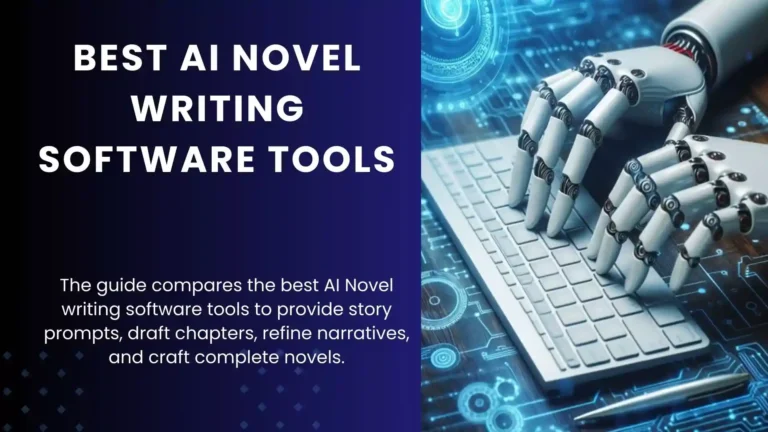
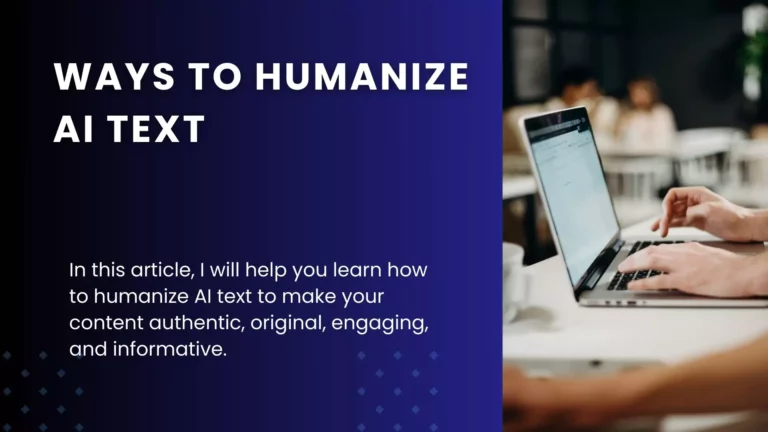
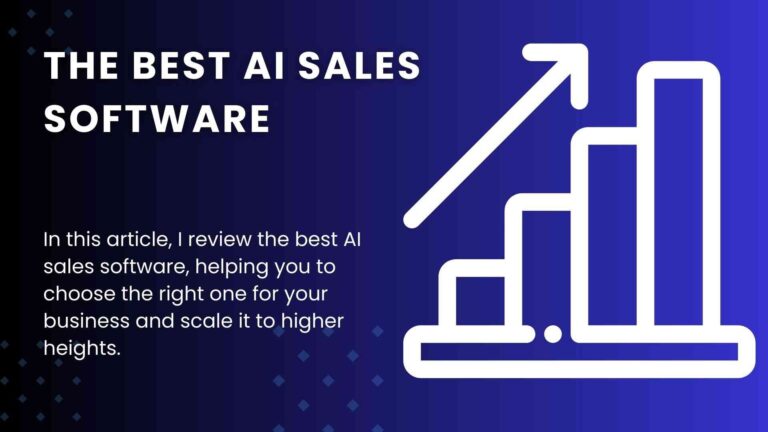


2 Comments